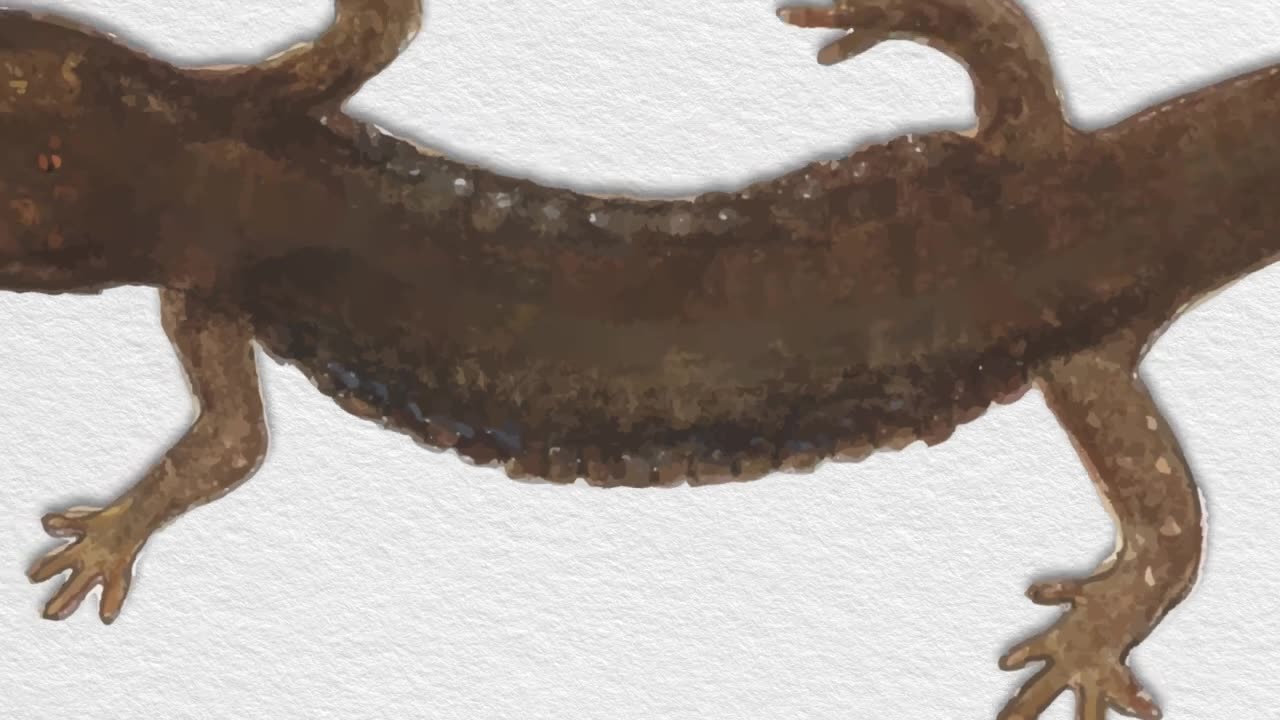Premium Only Content

Shenandoah Salamander - Part 1
The Shenandoah Salamander is a small amphibian endemic to the Shenandoah National Park in Virginia, USA. Known scientifically as Plethodon shenandoah, this species belongs to the lungless salamander family, which means they breathe through their skin. These creatures have a unique appearance, typically measuring around 3 to 4 inches in length, with a sleek, slender body and a distinctive coloration ranging from dark gray to brown with scattered spots of lighter shades.
Their habitat primarily consists of damp, wooded areas, often under rocks, logs, or leaf litter, where they find shelter and hunt for their prey, which mainly consists of small invertebrates like insects, spiders, and worms. Shenandoah Salamanders play a crucial role in the ecosystem by controlling insect populations and serving as indicators of environmental health due to their sensitivity to changes in habitat quality.
These salamanders face threats from habitat loss due to human development, climate change affecting their moist habitats, and potential disruptions to their environment caused by invasive species. Conservation efforts within the Shenandoah National Park and surrounding areas focus on preserving their habitats and monitoring population trends to ensure their continued survival.
Tags: Shenandoah Salamander, Plethodon shenandoah, amphibian, endemic species, conservation, habitat loss, Shenandoah National Park, lungless salamander, environmental indicator
-
 LIVE
LIVE
vivafrei
3 hours agoSCOTUS Rules for Trump? Kind Of... Market Bloodbath That Wadsn't... Canadian Tyranny Updates & MORE!
2,530 watching -
 LIVE
LIVE
Redacted News
17 minutes ago"This is war!" Trump and China on a collision course with 104% tariffs, Iran and US in direct talks
2,470 watching -
 LIVE
LIVE
The Quartering
2 hours agoChina BANS US Films, Trump DOUBLES Tariff, Democrats BLAST Blue Collar Work & Shocking Gen Z Report
35,489 watching -

Awaken With JP
2 hours agoIt’s Good to PANIC About Tariffs - Lies Ep 86
19.3K13 -
 UPCOMING
UPCOMING
The HotSeat
51 minutes agoBlood Money: Funds Still Flowing for Austin Metcalf’s Killer + NYC Fights BACK!
77 -
 UPCOMING
UPCOMING
Revenge of the Cis
2 hours agoEpisode 1471: Sucker
4071 -
 1:03:42
1:03:42
Michael Franzese
1 hour agoShe Spent 36 Years in Prison for a Crime She Didn’t Commit
8.11K4 -
 LIVE
LIVE
Committee on House Administration
1 hour agoSubcommittee on Elections Hearing: “Revisiting the 2024 Election with Secretaries of State”
773 watching -
 1:01:58
1:01:58
The Football Terrace
3 hours ago $0.37 earnedGoldbridge SLAMS Neville's AGENDA! Carragher’s Arsenal AGENDA EXPOSED! Arsenal Ready for Madrid WAR
6.23K -
 1:24:27
1:24:27
Russell Brand
4 hours agoTrump THREATENS China As Xi Vows to ‘FIGHT TO THE END’ Against US Tariffs – SF562
134K28